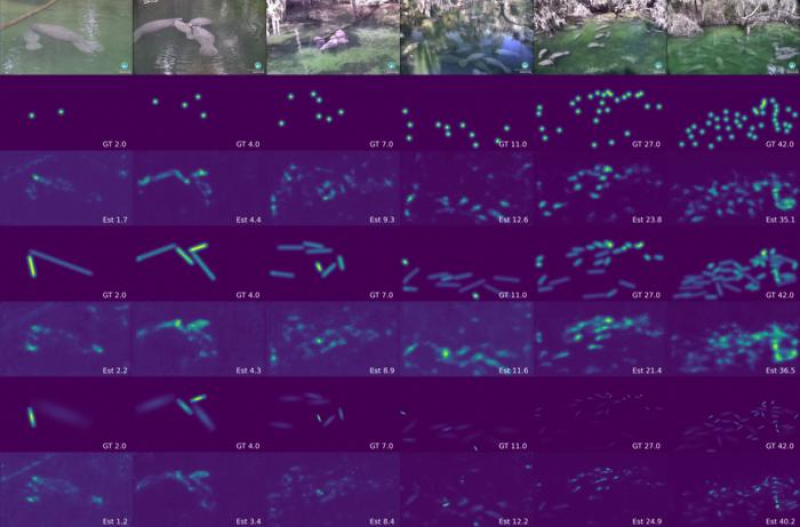Manatees are an endangered species with voracious appetites and often spend up to eight hours a day grazing for food in shallow waters, making them vulnerable to environmental changes and other risks.
Accurately counting manatee clusters in a region is important for designing safety rules for boaters and divers. But counting manatees is challenging.
Because manatees tend to live in herds, they often block each other when viewed from the water’s surface. As a result, small manatees are likely to be partially or completely hidden from view. In addition, water reflections may make manatees invisible, and they can be mistaken for rocks or branches.
While aerial survey data are used in some regions to count manatees, the method is time-consuming and costly, and its accuracy depends on factors such as weather conditions and time of day. Now, there’s a low-cost method that provides a real-time count to alert ecologists of threats.
U.S. National Science Foundation-supported researchers at Florida Atlantic University are among the first to use a deep learning-based crowd counting approach to automatically tally the number of manatees in a region, using images captured from CCTV cameras. The results, published in Scientific Reports, not only address the technical challenges of counting animals in complex environments but also offer potential ways of aiding endangered species.
To determine manatee densities and calculate their numbers, researchers used generic images captured from surveillance videos at the water’s surface. They then used a design matching the manatees’ unique shape to transform the images into manatee-customized density maps.
To validate their method and facilitate further research, the scientists developed a comprehensive manatee counting dataset published through GitHub for public access.
>>> Read full article>>>
Copyright for syndicated content belongs to the linked Source : Nsf.gov – https://new.nsf.gov/news/saving-endangered-species-new-ai-method-counts
